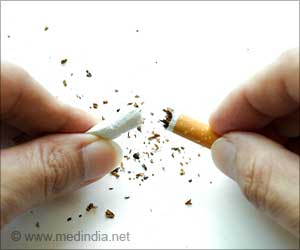In the United States, researchers from New York University's Center for Drug Use and HIV Research (NYU CDUHR) identified the proportion (18:1) between the use of powder and crack cocaine

In their analysis, now in the on-line edition of Drug and Alcohol Dependence, crack users were at higher risk than powder cocaine users for reporting a lifetime arrest or multiple recent arrests. Racial minorities were at low risk for powder cocaine use, but they tended to be at high risk for crack use. "Much of the public literature simply focuses on racial minorities being at high risk for arrest and incarceration due to drug possession said Dr. Palamar. Our research shows it is much more complex than that. Crack users are much more likely to experience arrest than powder cocaine users, and being poor is the true overwhelming correlate, not being black or a minority."
Dr. Palamar and his team noted that individuals with higher education, higher income or full-time employment were much less likely to use crack; however, these were sometimes risk factors for powder cocaine use, which is often more associated with affluence. The researchers found that blacks were in fact at increased risk for lifetime and recent crack use, but not when controlling for other socioeconomic variables. However, blacks who did use either powder cocaine or crack tended to use at higher frequencies, possibly placing them at even higher risk for arrest.
"We found that 12% of adults in the US have used powder cocaine, while only 4% have used crack cocaine," said Dr. Palamar. "But it is the 4% who have used crack who are at greatest risk for arrest, which can further marginalize these individuals, making them unable to get jobs or school loans."
Contrary to public perception, powder cocaine and crack are actually the same price per unit, but powder cocaine is more "expensive" as it tends to be sold in grams. Not only does powder cocaine cost more, but it has been portrayed as an elite drug in popular culture, associated with luxury or glamour.
The research study confirms that crack tends to be used by a more marginalized segment of society, and it is this socioeconomically disadvantaged segment of society who is at higher risk for arrest and subject to the 18:1 sentencing disparity. Since black individuals in the US are so much more likely to live in poverty, disproportionate numbers have been incarcerated for crack offenses, while more educated and affluent individuals are less likely to be subject to legal consequences for powder cocaine use.
Advertisement
Advertisement












